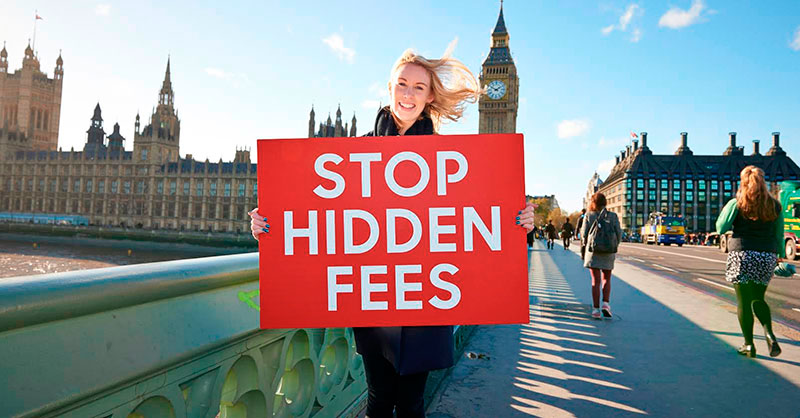The art of clickbait.
You clicked on the link, didn’t you? How do you attract clicks on your post in a world that is moving so fast that you don’t have time to read everything? Create a title for you article that is too good not to click. Enter clickbait, fishing for your clicks by creating purposely false titles. Clickbait can be described as “web content that is aimed at generating online advertising revenue, […] relying on sensationalist headlines or eye-catching thumbnail pictures to attract click-throughs and to encourage forwarding of the material over online social networks.”¹ Clickbait is probably one of the most hated categories of posts on social media.
 BuzzFeed and Upworthy are known to use clickbait titles to drive in views and ad revenue. (Screenshot of BuzzFeed taken on October 1st, 2016)
BuzzFeed and Upworthy are known to use clickbait titles to drive in views and ad revenue. (Screenshot of BuzzFeed taken on October 1st, 2016)
Facebook recently introduced a new algorithm that aims to stop these kind of ‘headlines’ to appear in your newsfeed. They already tried to limit the amount of clickbait appearing in your newsfeed in 2014², but apparently those clickbait sites still found a way around it. In 2014 Facebook announced that they would start looking at the amount of time spend reading the article, and the amount of likes given, to determine whether the article is clickbait or not. The new algorithm will will weed out misleading and exaggerated headlines the same way that email spam filters weed out fantastic offers to help Nigerian princes recover their lost fortunes. The new algorithm will de-prioritize posts with headlines that “(1) withholds information required to understand what the content of the article is; and (2) exaggerates the article to create misleading expectations for the reader.”³. Facebook employees analysed tens of thousands of headlines, and flagged those that intentionally withhold important information and those that use exaggeration to mislead the reader as “clickbait”. From there, they built a system that looks at the set of clickbait headlines to determine what phrases are commonly used in clickbait headlines that are not used in other headlines. This is how many self learning systems work. You show them a set off correct items and a set of incorrect items and the software itself can figure out if a new item is correct (no clickbait) or incorrect (clickbait).
Facebook wants to get rid of the clickbait articles in order to show people the stories most relevant to them. When your whole timeline is full of clickbait this ruins your user experience and you will probably not return to Facebook very often anymore which is bad for Facebook.
So hopefully no more:
- This [xxxxx] will change your life
- With this one weird trick…
- This [xxxxx] will restore your faith in humanity
- This Young Boy Was Bullied At School For Having Tiny, T-Rex Like Arms. What He Did Next Might Make You Rethink Slavery.
- Here Are 37 Grandmas Who Want To Squeeze Your Cheeks And Call You “Pookie”, But Can You Guess Which One Is Actually A Russian War Criminal?
- Spooky! This Picture Of A Mummy Was Found Upstairs In The Attic, But Nobody Knows Who Took It?!
- Ewww! Your Cat Brought A Bloody, Mutilated Animal Into Your House! You Won’t Believe What Happened When The Toddler Got Hold Of It.
- Watch As This Incredibly Strong Black Woman Redefines What It Means To Eat 18 Hotdogs In Less Than One Minute.
- You’ll Never Believe Who Tripped and Fell on the Red Carpet…
- Apples Are Actually Bad For You?!
- When She Looked Under Her Couch Cushions And Saw THIS… I Was SHOCKED!
- He Put Garlic In His Shoes Before Going To Bed And What Happens Next Is Hard To Believe
- The Dog Barked At The Deliveryman And His Reaction Was Priceless.
in the future.
¹https://en.wikipedia.org/wiki/Clickbait
²https://www.cnet.com/au/news/facebook-nixes-click-bait-headlines-in-users-news-feeds/
³http://newsroom.fb.com/news/2016/08/news-feed-fyi-further-reducing-clickbait-in-feed/
Read also:
FinTech: How to get the best exchange rate when traveling abroad. 5/5 (1)
![[GONE WRONG] 13 SECRET HEADLINES FACEBOOK WANTS TO STOP. NUMBER 5 WILL BLOW YOUR MIND! 5/5 (1)](https://digitalstrategy.rsm.nl/wp-content/uploads/2016/10/ITVjr.jpg)



